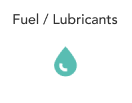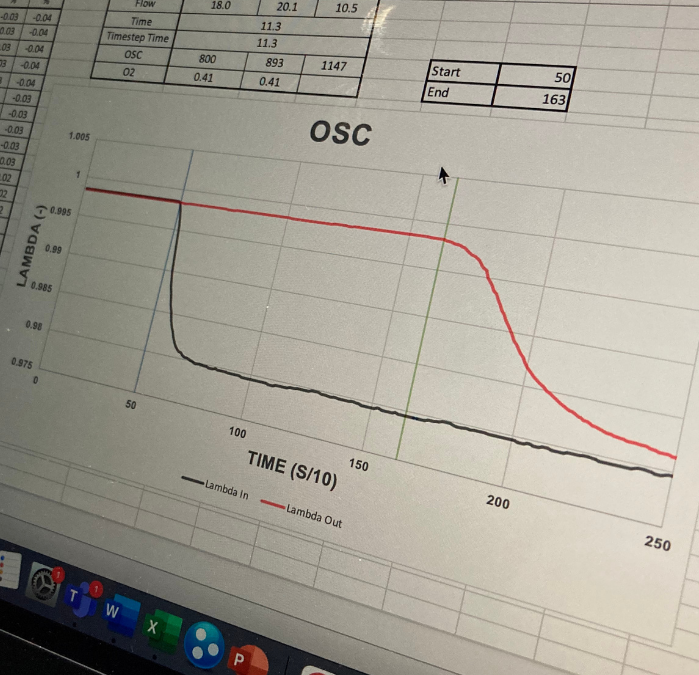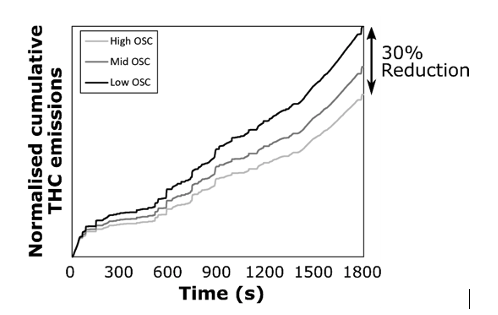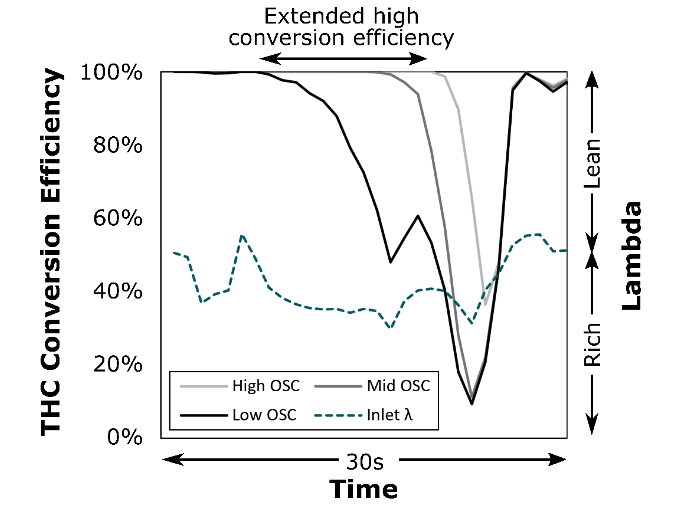by Matthew Elliott, CATAGEN Technical Expert
Controlling motorcycle emissions performance over a drive cycle is a multifaceted challenge for the aftertreatment design team.
On one hand the motorcycle emissions must fall below legislative target values, but on the other hand the aftertreatment cost must be controlled. This is particularly prudent with current trends in precious metal group costs.
One other factor to consider in this equation is the oxygen storage capacity (OSC) of the catalyst, which may aid the development of a cost effective aftertreatment solution.

Fundamentally, OSC provides a means of storing and releasing oxygen (O2) from the catalyst, under lean and rich conditions respectively.
Throughout the drive cycle, this functionality can allow high conversion efficiency to temporarily be sustained whilst the catalyst operates outside of its ideal AFR window.
The effectiveness of O2 storage in emissions control is dependent on the OSC availability. There are multiple factors to consider including:
– washcoat technology,
– catalyst volume,
– catalyst temperature and
– the level of ageing of the cat amongst others.
The combined impact of each of these factors together determines the available OSC at a point in time, whether that is in the catalyst’s lifetime, or within a drive cycle.
To illustrate the impact of OSC on transient emissions, a simple study was performed with the CATAGEN Catalyst Kinetic Model*.
Drive cycle emissions for a World Motorcycle Test Cycle (WMTC) test were predicted for an aged catalyst with three different levels of OSC, classed as low mid and high.
By evaluating the data generated by the CATAGEN model, the impact of OSC is clear. From a high-level view we can see that the cumulative total hydrocarbon (THC) emissions over the drive cycle are reduced with increased available OSC.
Taking a deeper dive into how the OSC improves catalyst performance, we can look at a 30 second window from the WMTC.
In this short window we see a rich excursion, where the exhaust gas has a lambda value below 1, under these conditions we would expect poor conversion of THC.
Owing to the OSC mechanism, the impact of this rich excursion is not evident straight away. It is clear that a catalyst with higher OSC is able to mitigate the effects of a rich excursion for longer, leading to improved emissions performance.
This is only one snapshot of a transient event, but we see many of these instances across the drive cycle.
Overall, the impact of OSC on emissions performance is clear from this short study; we can use the OSC mechanism to mitigate against the negative impact of lean or rich excursions during transient phases of the drive cycle.
The amount by which we can control transient emissions is governed by the quantity of available OSC, with more OSC giving us more leeway, and consequently yielding improved emissions performance over the drive cycle.
Download the CATAGEN guide to Controlling transient emissions performance through the use of Oxygen Storage Capacity
*CATAGEN Catalyst Kinetic Model – a mathematical model developed to simulate catalyst out conditions – publications available on request.
More Motorcycle Content:













